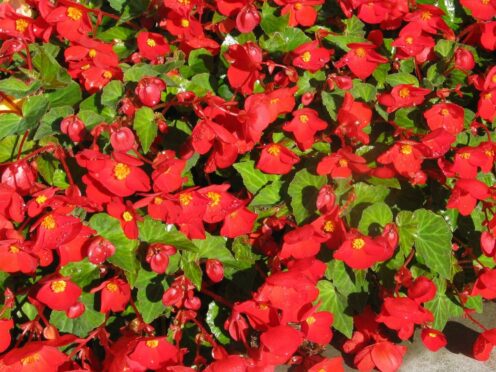By the time you read this offering, some areas will have had a bit of frost but nothing too severe or long lasting, I hope.
The positive outcome will be the signal to plants that they must start “shutting up shop” and go in to their dormant phase for a few months.
The autumn colours are truly with us and some of the herbaceous perennials have already started to die back; our collection of Hostas are well in to their dormancy, the leaves having started to yellow a couple of weeks ago.
As part of my routine, the tubs with spring flowering subjects have been planted up, mainly with polyanthus with tulip bulbs to provide more colour, still in the box.
This is just a wee reminder that it is advisable to wait and plant them in November. Why? Have you forgotten? One of the scourges affecting tulips is a disease called Tulip Fire (a Botrytis type).
Dormant bulbs can be infected in the warm soils of late autumn so, wait until November when soil temperatures have dropped and then plant the bulbs, which will remain healthy to complete a fine display come spring 2022.
These early frosts should also remind us that some of our newly planted shrubs and herbaceous plants could be prone to damage.
Did you check out the winter tolerance of that new shrub you fancied which you planted earlier in the year?
The hardiness information would have been on the label; as I have often said – do the homework, climate change will alter tolerances.
As I explained a year or two back, the Royal Horticultural Society (RHS) has a table entitled Hardiness Zones.
Changing climate
But, as if it needs me to remind you, our climatic conditions are changing and as a result, these zones are bound to change.
Slow though it might be, it behoves us to be aware that some of the changes will affect the plants in our gardens.
Some gardeners would argue that the process has already started. For example, I was talking with a chum the other night who commented that his early potatoes were rather small.
He had grown the variety for years and knew what to expect in terms of yield, so he was very disappointed.
“Funnily enough,” says I, “my onions are smaller than I have come to expect – nearer golf ball size than tennis ball.”
Why? We reckoned that the young plants had been short of water during the crucial early season through April and May.
Evidence of climate change? Could well be. Essentially these are problems that neither of us had experienced before, so you can bet we will be keeping a watchful eye on them next spring.
Another strange occurrence came to mind at the same time. I have had a dwarf Rhododendron flowering in the garden for a couple of months.
It should have been April, not August. Spooky!
Considering that there are new plants coming on to the market on a regular basis, and you don’t have to be a gardener to know that or visit a garden centre, the daily press is loaded with adverts – if you are tempted, remember the watchword.
That RHS chart is presented in 10 zones. Zone 1 indicates that average minimum winter temperatures in Zone 1 drop to -46C.
At Zone 10 the minimum is 0C.
The lowest zone for plants to be regarded hardy in Scotland would be in Zone 7, that means able to survive winter temperatures down to -18C.
In other words, if you fancied a plant labelled Zone 8, 9 or 10 you have no worries.
In my view, some plants said to be hardy down to zone 7 would struggle unless all growing conditions were particularly good.
There is no trouble with Begonias. They are not hardy, they are most definitely tender though, as we all know they will do perfectly well when treated as half hardy plants.
They do well outside between May and September, that is why some types are very popular as summer bedding plants – still flowering well in places.
These plants are perennials, for example the popular small-flowered types like Flamboyant grow from tubers and they feature as my “tip of the week”.
Our plants were lifted from tubs a week or two ago, placed in trays in a cold frame, covered but well ventilated to allow them to dry out.
Last week I removed the dead foliage, rubbed off the soil still sticking to the tubers and will now bring them in, to be stored indoors, frost-free and dry, no light required, where they will remain dormant until about February next year before giving them light, room temperature and some moisture to encourage new growth.



